Now that the book has officially closed on the 2013-14 NHL season, the stretch has arrived, for those of us that “Bleed Blue,” that is simultaneously loved and loathed, the off-season. We anticipate it because it potentially means acquiring a puck-handling piece (or pieces) of the proverbial puzzle that potentially reaps future rewards.
 Conversely, we know that pick-ups and swaps could also result in the departure of skaters that we’re familiar with and the newly-acquired commodities bust. Free-agent acquisitions and trades are two primary methods of growth. We’ve come to expect it and one can bet that this website will be watching the front-office activity closely and will analyze, and perhaps scrutinize, the transactions as the summer progresses.
Conversely, we know that pick-ups and swaps could also result in the departure of skaters that we’re familiar with and the newly-acquired commodities bust. Free-agent acquisitions and trades are two primary methods of growth. We’ve come to expect it and one can bet that this website will be watching the front-office activity closely and will analyze, and perhaps scrutinize, the transactions as the summer progresses.
A third method takes place this Friday in Philadelphia, the 2014 NHL Entry Draft, where the Blues get overall pick #21, its lone selection in the first round.
Here’s where a team’s top pick becomes such a mystery…and a gamble. The selected youngster may look good on paper, his play might be impressive and he might fit into the future needs of a club, but will it pan out in the end? Will the selection become an integral part of an organization’s future or will it end up as merely trade bait in a transaction?
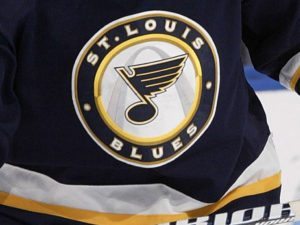 Draft picks are applied to any professional sport, but it appears that, locally, the Blues have been extremely pro-active in recent memory. The proof? Out of the Blues’ last fifteen first-rounders, seven of them were on the starting roster last season.
Draft picks are applied to any professional sport, but it appears that, locally, the Blues have been extremely pro-active in recent memory. The proof? Out of the Blues’ last fifteen first-rounders, seven of them were on the starting roster last season.
So as the Blues’ brain trust heads to Philly this weekend, here is a look back at the franchise’s first-round selections in prior drafts. Much like any historical overview of the topic, the St. Louis Blues’ ledger of first-rounders is punctuated by peaks and valleys. Some enjoyed success with the club, others enjoyed career numbers elsewhere, and some never competed in a NHL game.
Honestly, looking back at four-plus decades of selections would be a little overwhelming for one column. So over the next three days, we’ll separate the selections into three designated time periods: (1) 1967-79, (2) 1980-99 and (3) 2000-13.
Reminisce…and enjoy!
1967: None.
The Blues was one of six expansion teams that joined the league for the upcoming 1967-68 season, which doubled the number of NHL teams competing to twelve. An expansion draft, featuring unprotected players from the “Original Six” franchises, was held. The Blues’ top pick in the expansion draft, third overall, was goalie Glenn Hall from the Chicago Blackhawks. As this was an expansion draft of current NHL players, the Blues, technically in the record books, did not have an official amateur top pick in 1967.
 1968: Gary Edwards (6th overall)
1968: Gary Edwards (6th overall)
The Blues’ inaugural first-round pick in the NHL Entry Draft was Edwards, an Ontario Hockey League goalie from Toronto that recorded a four-minute substitution appearance for the club in 1968. In 1969, his lone start for St. Louis resulted in a loss. Following his departure of the franchise, the net minder found success with Los Angeles from 1971-77, where as a back-up to starter Rogatein Vachon, provided one of the more successful goalie tandems in the mid-1970s. Edwards rejoined the Blues during the 1981-82 season, where in 10 games he finished 1-5-1. Traded to Pittsburgh later that season and retired at the conclusion of it. Career NHL totals: 88-125-51, 3.40 GAA.
1969: None
The Blues did not pick in the amateur draft until round two. With the pick, #19 overall, the Blues selected winger Mike Lowe, who never played with the team.
1970: None
Like the year prior, the Blues did not pick in the NHL Entry Draft until round two. With the pick, #19 overall, St. Louis selected winger Murray Keogan, who never played with the team.
1971: Gene Carr (4th overall)
Carr’s stint with the Blues lasted 15 games during the 1971 season. The forward recorded three goals and two assists before being traded to the New York Rangers. Carr went on to play for the Los Angeles Kings for four complete seasons and added solo-season stints in Pittsburgh and Atlanta before retiring in 1979. Top NHL season: Pittsburgh, 1977. 70 Games. 17 G, 37 A, 54 PTS, 76 PIM.
 1972: Wayne Merrick (9th overall)
1972: Wayne Merrick (9th overall)
A gritty center, Merrick spent four seasons with the Blues, from 1972-76. Personal best recorded as a ‘Note was 1974-75, where he scored 28 goals and 37 assists in 70 games. Career blossomed after being acquired by the New York Islanders in 1977. Merrick became a member of the infamous “Banana Line,” a reference to the yellow bibs worn in practice, with forwards John Tonelli and Bob Nystrom. Won four Stanley Cups with the Islanders (1979-1983) and retired with the club at the end of the 1984 season. St. Louis stats (four seasons): 209 Games. 66 G, 79 A, 145 PTS, 99 PIM.
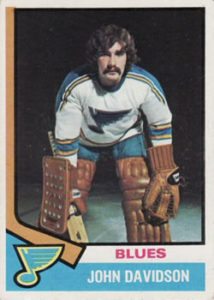 1973: John Davidson (5th overall)
1973: John Davidson (5th overall)
A starter in his rookie campaign, Davidson played goalie for two seasons with the ‘Note. In 79 career games with St. Louis, he charted a record of 30-34-14. Played the rest of his career with the New York Rangers and retired in 1983. His greatest achievements arguably came after his active career as a player. Went on to become an internationally-known color commentator for NHL broadcasts on CBC, ABC, FOX, NBC and Versus.
After a 13-year career behind the microphone, Davidson left broadcasting in 2006 to become the President of Hockey Operations for the St. Louis Blues. He left the position in October 2012 to accept a similar role with the Columbus Blue Jackets. Davidson was awarded the Foster Hewitt Memorial Award by the Hockey Hall of Fame in 2009 for his contributions to broadcasting.
1974: None
The Blues did not pick in the NHL Entry Draft until the second round, where they selected defenseman Bob Hess.
1975: None
The Blues’ top pick occurred in the second round, where they drafted goalie Ed Staniowski, who played with the team from 1975-1981. He netted 27 wins with an individual best 10-3 record during the 1981-82 season.
 1976: Bernie Federko (7th overall)
1976: Bernie Federko (7th overall)
The Hall of Fame center spent 13 of his 14 NHL seasons with the Blues and holds seven individual franchise records, including career games (927), assists (721) and points (1,073). Federko’s top individual regular season was 1983-84, recording 41 goals and 66 assists. A two-time All-Star, he scored his 1,000 point on March 19, 1988.
At the conclusion of the 1988-89 season, he was traded in a five-player deal to Detroit, and after one season with the Wings, Federko, who played precisely 1000 NHL career games, announced his retirement. His number “24” was retired by the Blues in 1992. Federko, inducted into the Hockey Hall of Fame in 2002, currently functions as a broadcaster for Blues’ telecasts on Fox Sports Midwest.
1977: Scott Campbell (9th overall)
The 6-3 defenseman opted to play for the Houston Aeros of the World Hockey Association after being drafted by the Blues. After one season with the club, Campbell played for the Winnipeg Jets, then a WHA team. When the Jets joined the NHL in 1980, he continued with that franchise for two additional seasons.
Unfortunately, his career would be cut short due to asthmatic conditions, exacerbated from his time spent in Winnipeg. Campbell briefly reunited with the Blues late in the 1981-82 season for three games, where he recorded zero points and 52 penalty minutes. Due to migraine headaches caused by medications prescribed for asthma, Campbell retired from hockey in 1982 at age 25. Post-hockey, Campbell got involved in harness horse racing, where he found success in Canada during the mid-1980s.
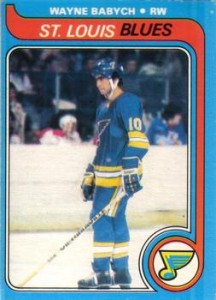 1978: Wayne Babych (3rd overall)
1978: Wayne Babych (3rd overall)
The Ukranian winger was highly touted in the 1978 draft and spent six solid seasons with the Blues. From 1978-84, Babych played in 396 games for St. Louis, scored 155 goals, 190 assists and recorded 382 penalty minutes. His top season for the ‘Note was 1980-81, where he posted 54 goals and 42 assists.
A participant in the 1981 All-Star Game, Babych continued his post-Blues’ career with stops in Pittsburgh, Quebec and Hartford. Retiring in 1987, Babych finished his NHL career with 192 goals and 438 points. He continued his post-skating career by organizing charitable “legends” games and currently resides in Winnipeg, Manitoba, Canada.
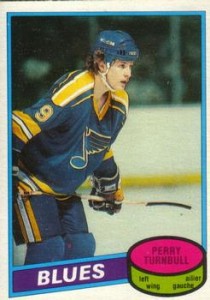 1979: Perry Turnbull (2nd overall)
1979: Perry Turnbull (2nd overall)
The bruising winger spent four and a half seasons with St. Louis after his initial signing, netting 129 goals, 90 assists and 747 penalty minutes in 345 games. Turnbull was acquired by Montreal midway through the 1983-84 season and, after its conclusion, skated for Winnipeg for three full seasons. He rejoined the Blues in 1987, where in 51 games he collected 10 goals, nine assists and 82 penalty minutes.
After playing his last NHL game in 1988, Turnbull elected to finish his ice career with a three-year stint in Italy. In his 11-year NHL career, he scored 188 goals, 184 assists and 1,245 penalty minutes. Post-ice hockey, Turnbull competed with the St. Louis Vipers’ roller hockey franchise from 1993-95, serving as a player/coach in the team’s final season. Currently, he is the operator of Midwest Sport Hockey in Ballwin, Missouri, which houses both competitive roller hockey leagues and internationally-ranked roller derby franchises.
COMING UP TOMORROW IN PART TWO OF OUR THREE-PART SERIES: A look at the first round draft picks from 1980-99, highlighted by the economic instability of the franchise during the 1980s and the loss of five consecutive picks in the 1990’s due to a high-risk, off-season acquisition.
(Image credit: National Hockey League, The Hockey Card Database & goaliesarchive.com)


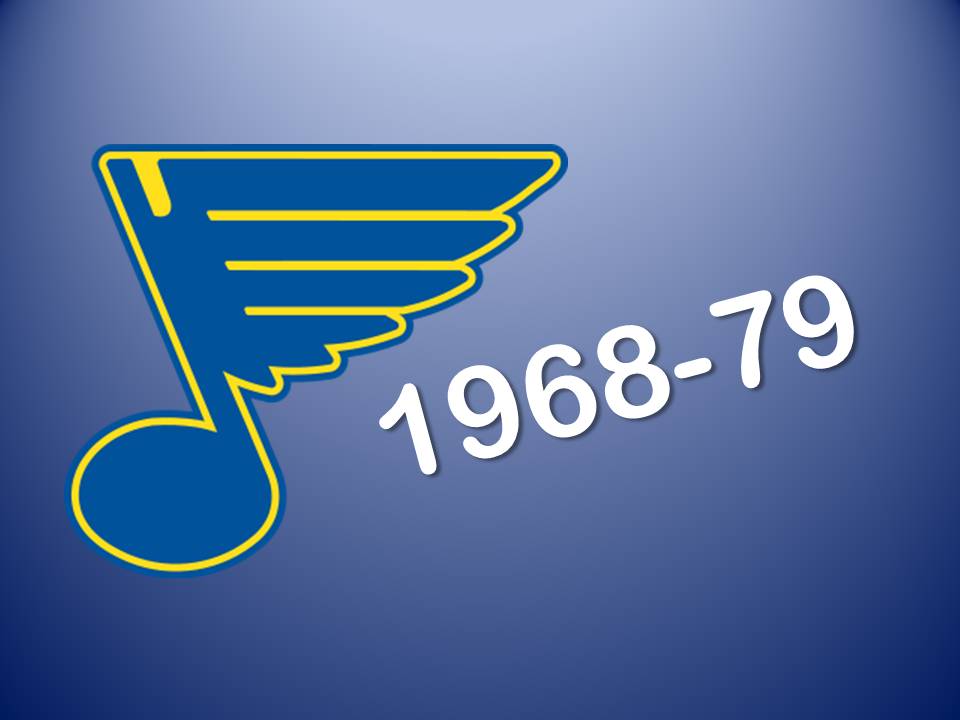
2 comments
[…] Blue The Years, Part 1: First Round Draft Picks 1968-79 […]
[…] Blue The Years, Part 1: First Round Draft Picks 1968-79 […]
Comments are closed.